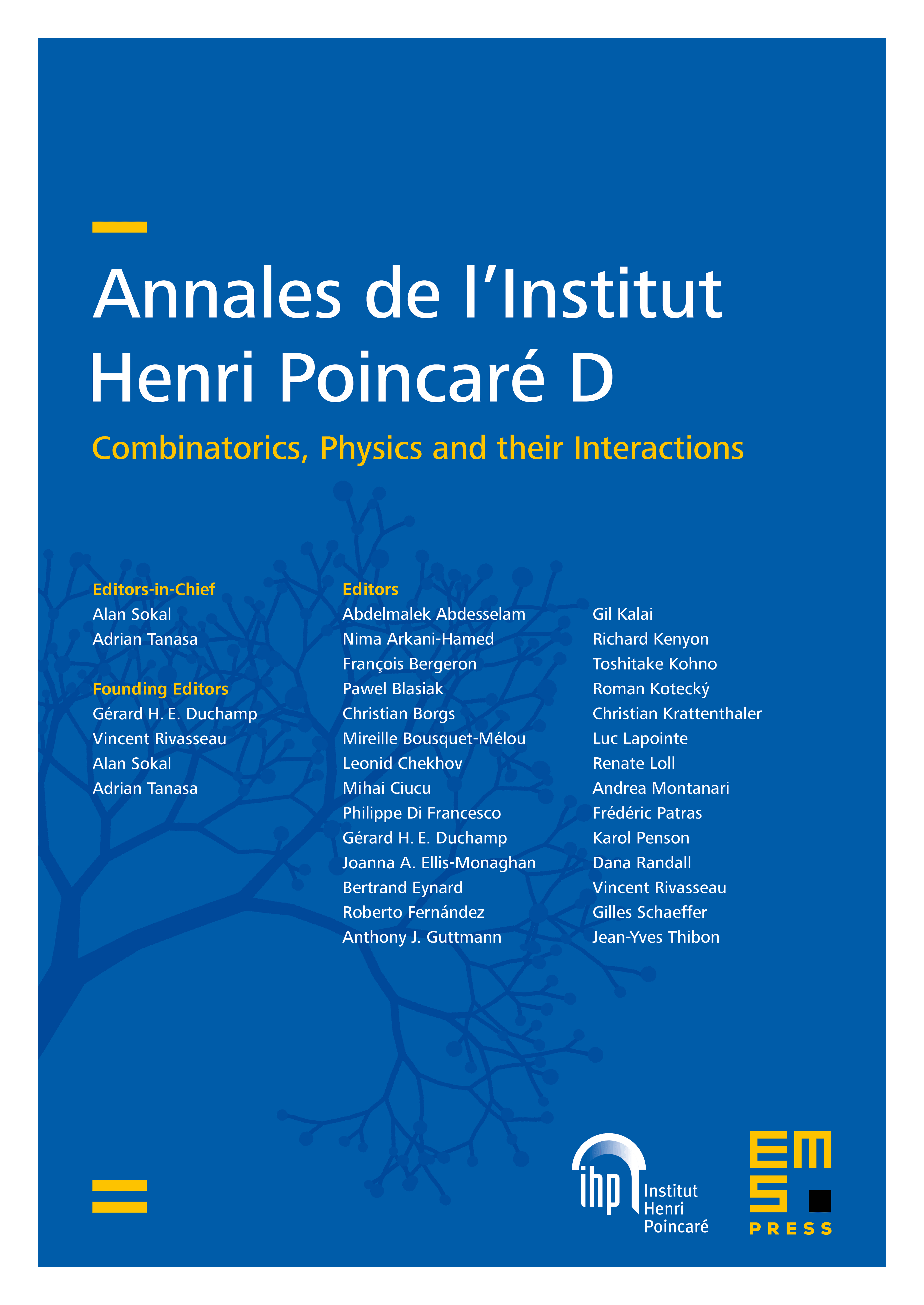Perturbing isoradial triangulations
François David
Université Paris-Saclay, CNRS, CEA, Institut de Physique Théorique, Gif-sur-Yvette, FranceJeanne Scott
Brandeis University, Waltham, USA

Abstract
We consider an infinite planar Delaunay graph which is obtained by locally deforming the coordinate embedding of a general isoradial graph , with respect to a real deformation parameter . Using Kenyon’s exact and asymptotic results for the critical Green’s function on an isoradial graph, we calculate the leading asymptotics of the first- and second-order terms in the perturbative expansion of the log-determinant of the Laplace–Beltrami operator , the David–Eynard Kähler operator , and the conformal Laplacian on the deformed Delaunay graph . We show that the scaling limits of the second-order bi-local term for both the Laplace–Beltrami and David–Eynard Kähler operators exist and coincide, with a shared value independent of the choice of the initial isoradial graph . Our results allow us to define a discrete analog of the stress-energy tensor for each of the three operators. Furthermore, we can identify a central charge () in the case of both the Laplace–Beltrami and David–Eynard Kähler operators. While the scaling limit is consistent with the stress-energy tensor and the value of the central charge for the Gaussian free field (GFF), the discrete central charge value of for the David–Eynard Kähler operator is, however, at odds with the value of expected by Polyakov’s theory of 2D quantum gravity; moreover, there are problems with convergence of the scaling limit of the discrete stress-energy tensor for the David–Eynard Kähler operator. The second-order bi-local term for the conformal Laplacian involves anomalous terms corresponding to the creation of discrete curvature dipoles in the deformed Delaunay graph ; we examine the difficulties in defining a convergent scaling limit in this case. Connections with some discrete statistical models at criticality are explored.
Cite this article
François David, Jeanne Scott, Perturbing isoradial triangulations. Ann. Inst. Henri Poincaré Comb. Phys. Interact. 11 (2024), no. 4, pp. 715–859
DOI 10.4171/AIHPD/178